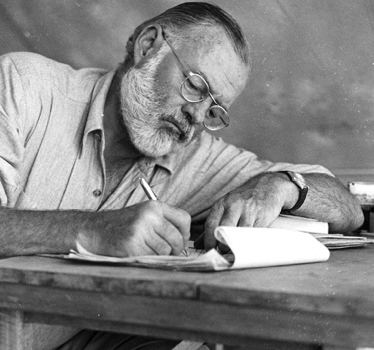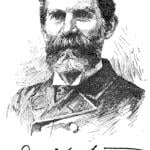To go along with my course at Northern on Women and Ministry, which begins this morning, I want to pull out a week long series on women in the world of Jesus. Much is said about “women in the Jewish world” and much of it uninformed. This entire series is rooted in Tal Ilan’s important book, Jewish Women in Greco-Roman Palestine (Hendrickson, 1996) and her second book, Integrating Women into Second Temple History (Hendrickson, 2001). There is no attempt to be complete and I would like to add all the details from Lynn Cohick’s fine book Women in the World of the Earliest Christians but I did not have time … and there is only a short bibliography at the end of this post. Alongside Ilan’s survey of the facts, comments will be occasionally made.
What I hope from this series is to provide each of us with a basic “state of the art” on what we know about women at the time of Jesus and the early churches, and at the same time, a counter to some of the stuff that is being said about women at that time.
In today’s post, I will look at two questions: how do we look at the evidence about women that has survived? And, what have the scholars been saying about Jewish women at the time of Jesus? Answers to both of these questions have a profound impact on what Christians say today about women and ministry.
How do we approach the evidence from the ancient world?
First, we need to respect the diversity of Judaism for it was a heterogeneous society and in each sector different understandings of women emerged. We cannot pretend that what one group thought or practiced another group also thought or practiced. Here are some variations to keep in mind: Pharisees, Sadducees, Essenes, poor vs. aristocrats, Jesus movement, am ha-aretz (common people unobservant of Pharisaic laws). In addition, the Diaspora (those living outside the Land of Israel) evidence about women reveals another set of variations.
Second, we need to be aware of our sources: most of the evidence that survives about women derives from the upper class and frequently expresses upper class, Pharisaic ideals rather than common person realities. There are no videotapes of life for women, nor are there records that survive about common women’s perceptions of their treatment. What we have is stuff that comes to us from a variety of sources, much of it from upper class males.
Third, there are various kinds of evidence. Many of the statements about women are in halakhic statements (legal statements by rabbis but which, though stated has binding, are not necessarily a reflection of reality) and in haggadic accounts (stories illustrative of halakhic statements but which frequently form tension with other halakhic material). The haggadic material frequently divulges a more realistic portrait of women. What this means is this: if you find a legal ruling that assumes something about women (that men were not to talk with women in public), you cannot just assume that everyone observed that ruling. In fact, it is highly likely that this was not the case and that such rulings were often given to counter behavior that was not liked.
Fourth, we need to remind ourselves of this: all texts reflect their context and the ideas of the author; there is no necessary correspondence between the text and reality. This could be expanded in many ways, and I’m not suggesting a neo-Marxist distrust of all powerful statements, but I do want us to be aware that what we read is not necessarily what was going on.
Fifth, we have a special problem when it comes to rabbinic literature. Regardless of how much information can be found germane to this topic, rabbinic literature shaped by two orientations that distort the realities of first century Galilean Jewish life: (1) the evidence pertains to the upper class or at least the “rabbinic followers” and (2) the evidence that survives mostly does so because it was important to legal concerns of the rabbis. Hence, while incidental details emerge of value, the concerns are always legal. This legal emphasis must not be equated with the emphases of real social life.
What has been said about women at the time of Jesus?
First, some Jewish scholars have debated whether the Bible (Christian Old Testament) or the rabbinic sources (e.g., Mishnah, Tosefta, Talmuds, and midrashic writings) is more liberating.
Second, some Christian scholars have consistently exploited the Jewish sources as a foil to Jesus and the NT: the Jewish sources are oppressive but the Christian ones are (more) liberating. Much of the claims made here are tendentious and unhistorical. It is simply untrue that Jewish men were mean-spirited and that Jesus and the early Christians set women free.
Third, feminist scholars tend to read the ancient sources, both Jewish and Christian, with a hermeneutic of suspicion: the sources were written by men and support the power of men; the sources depict women as passive and receptive. Christian feminists align themselves consistently with the second view but have had a different agenda. The most distinctive and radical Christian feminist voices are Elizabeth Schüssler-Fiorenza (In Memory of Her) and Bernadette Brooten (Women Leaders in Ancient Synagogues).
Some Jewish feminists have argued that Christian feminists are anti-Semitic or anti-Judaism (see esp. Levine, “Lilies of the Field” [“The suggestion that Jesus was the only Jewish man to treat women with compassion is at best ahistorical-apologetic; the connection between ‘friend of women’ and ‘friend of sinners’ is at best overdrawn. The implication that the Jewish system tortured women is slanderous” (334). And: “There is no need to highlight a negative Judaism. Jesus can remain the liberationist Christian feminists want without being removed from his Jewish context” (351, italics added). See also Rosenblatt, 148-150.
Fourth, historical Jesus scholars, mostly Christian, have argued consistently that Jesus liberated the Jewish woman from oppressive Jewish laws. The most influential voice of the previous generation was Joachim Jeremias (Jerusalem in the Time of Jesus, 232-250; Ilan’s book is an update of Jeremias’ famous chapter).
Daughters: here is a basic categorizing of the evidence that survives.
First, the birth of a daughter: some (no doubt) males find the birth of daughters to be a disappointment because they do not carry on the line of the father ( Ben Sira 22:3; Genesis Rabbah 45.2). The command to “be fruitful and multiply” can be thwarted.
Second, what about relations between father and daughter? For many Jewish fathers, daughters were a concern lest they become impregnated before marriage (Ben Sira 42:9-11) but many Jewish sources in haggadic material reveal affection between father and daughter (e.g., Song of Songs Rabbah 1.9.5; 3.7.1; 3.8.2; 6.12).
Third, on naming a daughter: daughters were named at birth after parents, grandparents, relatives, and great Jewish leaders. The most popular names are Salome, Shelamzion, and Miriamme/Maria (these three names account for 46.5% of known names in Palestine); they may reveal idealization of the Hasmoneans. Daughters were identified by the father: “Miriam the daughter of X.”
Marriage: what do we learn about marriage in the ancient Jewish sources?
First, Jewish males were to marry but marriage was not idealized; it brought stability to a young man’s life (Ben Sira 36:30) and one rabbi threatened eternal separation from Heaven for not marrying (bPesahim 113b). R. Yose said since creation, “God sits and makes matches, assigning this man to that woman and this woman to that man” (Genesis Rabbah 68.4). [John’s and Jesus’ celibacy were, therefore, not extraordinary.]
Second, rooted in Proverbs 31, there is a regular praise of the Virtuous Wife : the idealized wife was obedient and beautiful. Ben Sira believed in four virtues for a wife: intelligence (25:8; 40:23), silence (26:16-17), wisdom (26:26), and beauty (26:13-18; 36:27).
Third, there are some reflections on what it means to be a Bad Wife: Ben Sira mentions nagging (25:20; 26:31), drunkenness (19:2), unfaithfulness (26:11-14). The rabbis said: “Who is deemed a scolding wife? Whosoever speaks inside her own house so that her neighbors can hear her voice” (mKetubot 7:6). The rabbis also said: “It is a duty (a mitzvah) to divorce a bad wife” (bEruvin 41b).
Fourth, unbeknownst to Dan Brown, there is evidence for valuing singleness: the more hasidic fringes of Judaism accepted and even idealized asceticism and celibacy (Essenes: acc. to Josephus, Ant. 18:21; War 2:120; cf. Matthew 19:10-12). Some men chose this as an option but the evidence for women choosing this option is negligible. (Maybe it is because they didn’t get to write the texts that survived!)
Fifth, at what age did marriage occur? The general rabbinic halakhah is that girls were married at 12 (cf. bSanhedrin 76a; mNiddah 5:6-8; bNiddah 45a says a daughter can be given in marriage at 3 years and one day!) in order to assure virginity. Boys were frequently just as young (Ben Sira 7;23; Lamentations Rabbah 1.2). However, there is evidence of later marriages as well. [How old was Mary? Probably she was a teenager.]
Sixth, social connection was integral to many marriages: marriage, mostly for the upper classes, was all about social status. So, it matters what your “class” was. [When Jewish Christians began to mix with Gentile Christians, this “status” element came to the fore.]
There are ten classes in Judaism according to mQiddushin 4:1: priests, levites, Israelites, impaired priests, converts, freed slaves, mamzers (bastards), netins (descendants of Gibeonites; cf. Josh. 9:27) shetukis (silenced ones), asufis (foundlings). [Gentile believers in Jesus were probably classes as “converts” by many — hence Acts 15’s ruling about expected levels of obedience.]
Later the rabbis graded classes more academically: daughter of a scholar, daughter of a great man, daughter of the synagogue leaders, daughter of a charity treasurer, daughter of an elementary school teacher (bPesahim 49b). Laws of incest applied (Lev. 18:6-18; cousins, uncles and aunts were permissible marriage partners in certain cases – tQiddushin 1:4 says “a man should not marry a woman until his sister’s daughter has reached maturity”).
Seventh, how did one choose a husband: the halakhah (oral law) ruled that parents chose marriage partners and love was the result of wise choices by the parents. But reality permitted greater flexibility: widows and divorcees found their own husbands and among the poorer classes there was even greater freedom to find a partner. The daughter could repudiate a husband if the father died before she reached maturity and had already chosen a husband for her.
Eighth, what about polygamy? Two legal practices prove that polygamy existed. The practice of yibbum (levirate marriage: when a husband died the husband’s brother was to take in the widow) and halitzah (the legal renunciation of yibbum). However, Judaism frowned upon polygamy as can be seen in the Dead Sea Sect (11QTemple 57:17-18) and the later rabbis who idealized monogamy. But, polygamy was often an economic issue: the poor could not afford more than one wife.
Ninth, here are the basics of the Marriage Process:
It begins with a legal betrothal (Qiddushin): nominal fee; legal arrangement.
There was an official marriage contract (Ketubbah): monetary arrangement in the event of death or divorce that ensured the maintenance of the woman. Divorce was expensive; customs varied (sometimes the woman sometimes the man had control of the funds).
Third, there was a marriage ceremony: the bride was taken ceremonially to the house of the groom.
Bibliography and Abbreviations
All Jewish sources can be found in the library in English translation; for rabbinic sources, I recommend the translations of Jacob Neusner whenever available. The easiest source to use is the Babylonian Talmud.
m is for Mishnah, followed by the tractate.
t is for Tosefta, followed by tractate.
b is for Babylonian Talmud, followed by the tractate.
y is for Yerushalmi Talmud, followed by tractate.
Other sources include the rabbinic midrash, OT Apocrypha, OT Pseudepigrapha, Jewish historians (like Josephus), and the Dead Sea Scrolls; each be found in the library in translation.
Rachel Biale, Women and Jewish Law: The Essential Texts, Their History, & Their Relevance for Today (New York: Schocken, 1995).
S.J.D. Cohen, “Menstruants and the Sacred in Judaism and Christianity,” in Women’s History and Ancient History (ed. S.B. Pomeroy; Chapel Hill: University of North Carolina Press, 1991), 271-299.
S. Freyne, “Jesus the Wine-drinker: A Friend of Women,” ,” in Kitzberger, Transformative Encounters, pp. 162-180.
T. Ilan, “The Attraction of Aristocratic Jewish Women to Pharisaism,” Harvard Theological Review 88 (1995) 1-33.
T. Ilan, “In the Footsteps of Jesus: Jewish Women in a Jewish Movement,” in Kitzberger, Transformative Encounters, pp. 115-136.
T. Ilan, Jewish Women in Greco-Roman Palestine (Peabody, MA: Hendrickson, 1996 [=1995; based on a Ph.D. dissertation at Hebrew University in Jerusalem in the late 1980s]).
J. Jeremias, Jerusalem in the Time of Jesus (Philadelphia: Fortress, 1969).
Ingrid Rosa Kitzberger, editor, Transformative Encounters: Jesus and Women Re-Viewed (Biblical Interpretation Series 43; Leiden: E.J. Brill, 2000). [A collection of essays by women about Jesus and women; the book is divided into literary, historical, and actualization essays.]
Amy-Jill Levine, “Lilies of the Field and Wandering Jews: Biblical Scholarship, Women’s Roles, and Social Location,” ,” in Kitzberger, Transformative Encounters, pp. 329-352.
S. McKnight, A Light Among the Gentiles (Minneapolis: Fortress, 1991).
S. McKnight, “A Parting within the Way: Jesus and James on Israel and Purity,” in B. Chilton, C.A. Evans, James the Just and Christian Origins (SupplNovTest XCVIII; Leiden: E.J. Brill, 1999) 83-129.
Gerbern S. Oegema, “Portrayals of Women in 1 and 2 Maccabees,” in I.R. Kitzberger, Transformative Enounters, 245-264.
Marie-Eloise Rosenblatt, “Gender, Ethnicity, and Legal Considerations in the Haemorrhaging Woman’s Story: Mark 5:25-34,” ,” in Kitzberger, Transformative Encounters, pp. 137-161.
Marianne Sawicki, “Magdalenes and Tiberiennes: City Women in the Entourage of Jesus,” ,” in Kitzberger, Transformative Encounters, pp. 181-202.
D.M. Scholer, “Women,” in Dictionary of Jesus and the Gospels, 880-887.
Carmen Bernabé Ubieta, “Mary Magdalene and the Seven Demons in Social-scientific Perspective,” ,” in Kitzberger, Transformative Encounters, pp. 203-223.
Elaine M. Wainright, “ ‘Your Faith Has Made You Well.’ Jesus, Women, and Healing in the Gospel of Matthew,” ,” in Kitzberger, Transformative Encounters, pp. 224-244.
B. Witherington III, Women in the Ministry of Jesus (Cambridge: Cambridge University Press, 1984).
 How much does it cost for our soldiers’ health?
How much does it cost for our soldiers’ health? Italy’s food flag:
Italy’s food flag:

















